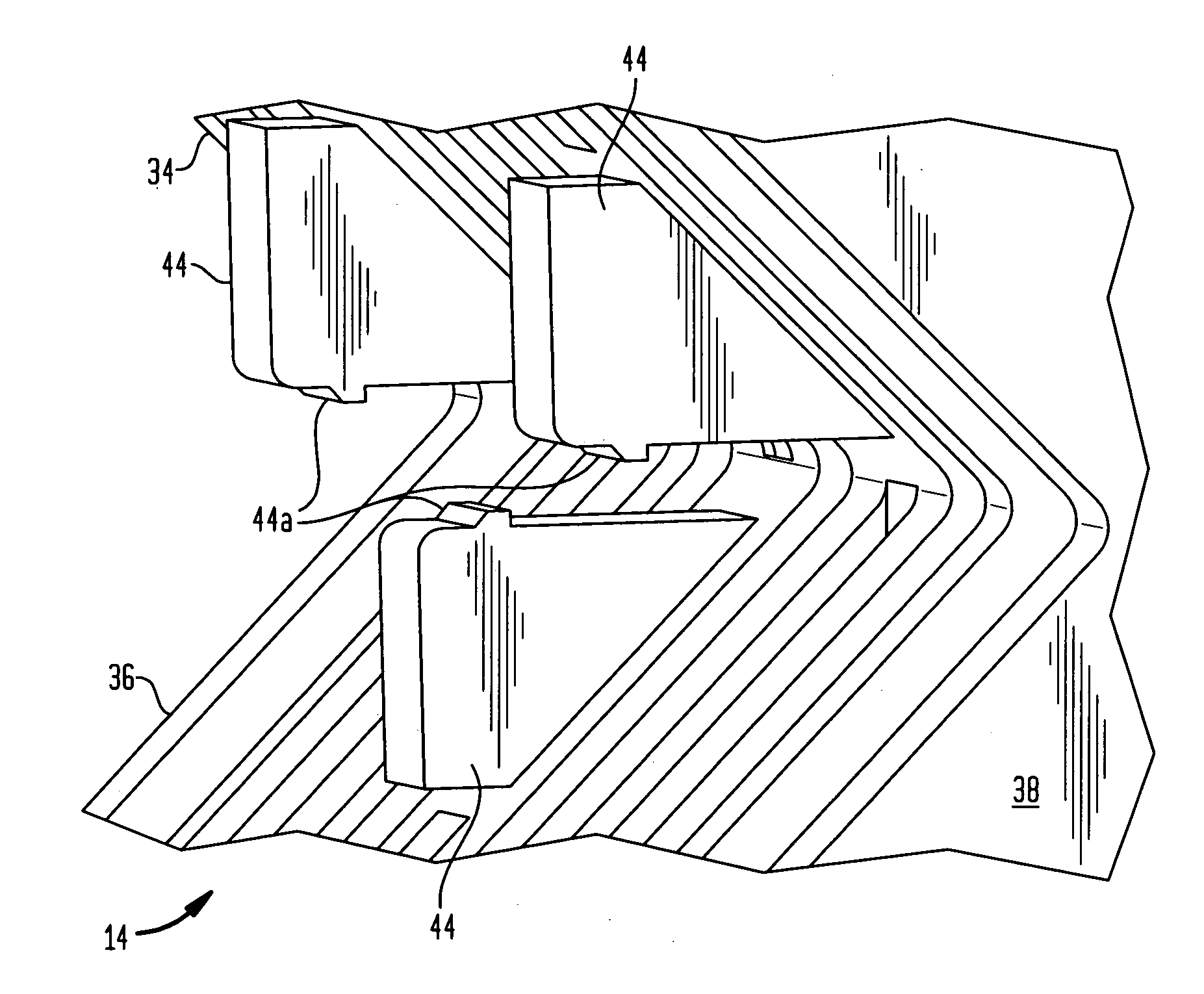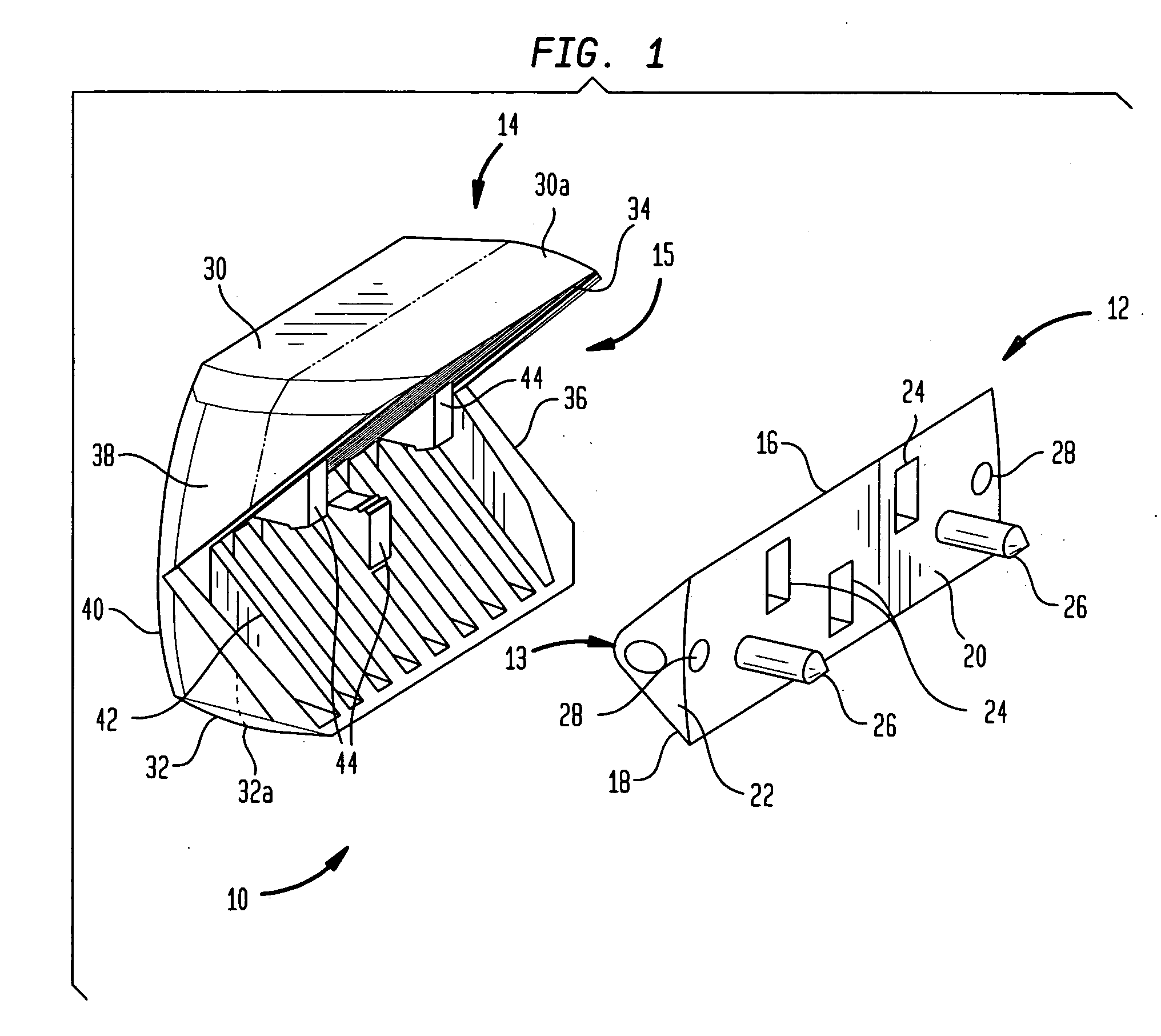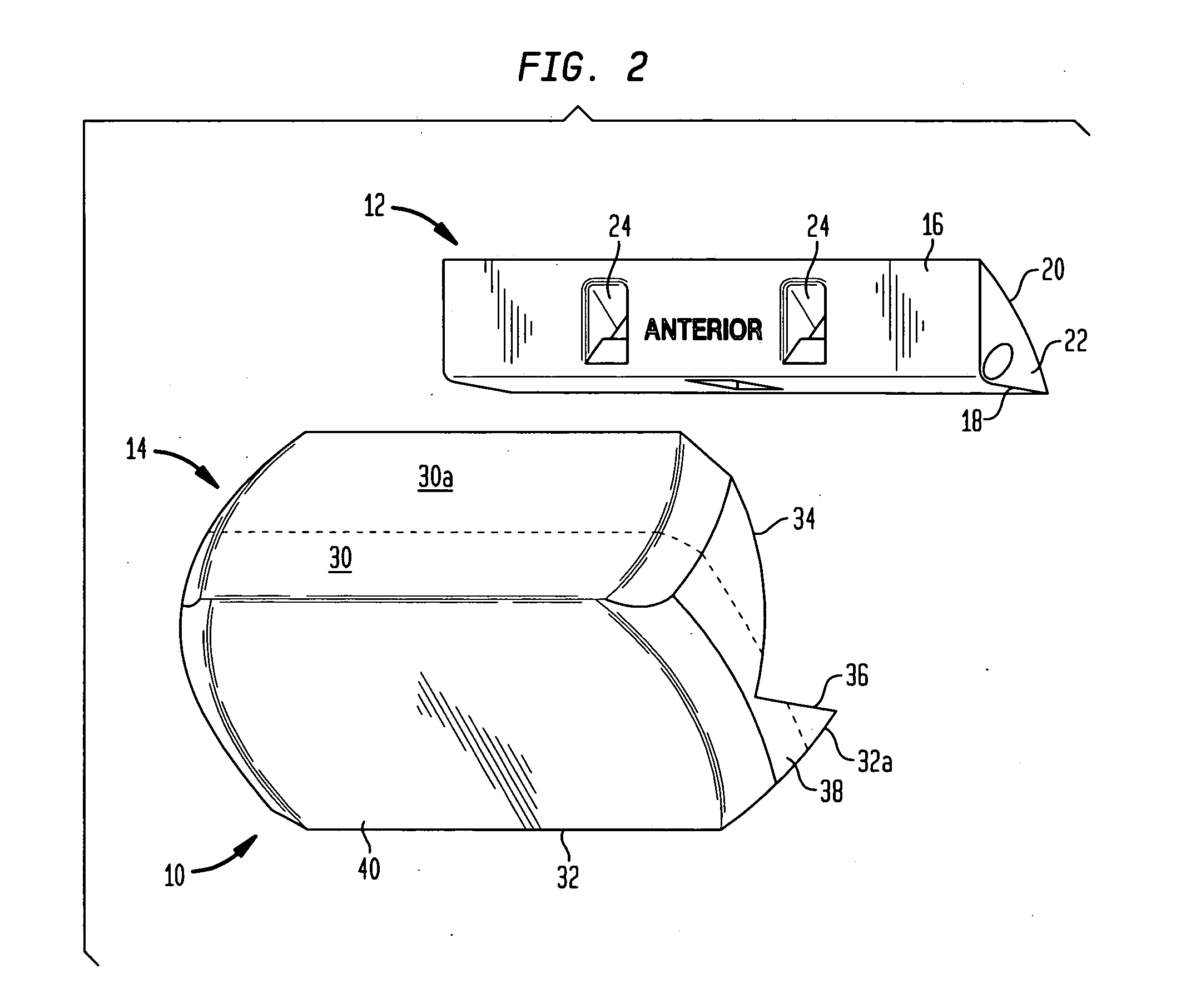Femoral cutting block
a cutting block and femoral technology, applied in the field of femoral cutting block and preparation of the distal femur, can solve the problems of increasing the cost of manufacture, high cost of such blocks, and affecting so as to improve the accuracy of anterior and posterior cuts, improve the accuracy of cutting, and improve the accuracy of distal cutting.
- Summary
- Abstract
- Description
- Claims
- Application Information
AI Technical Summary
Benefits of technology
Problems solved by technology
Method used
Image
Examples
Embodiment Construction
[0035]Referring to FIGS. 1-7, shown is a cutting block assembly generally denoted as 10 comprising a first block 12 capable of interlocking with a second block 14 to form a four-in-two (4-in-2) cutting block for resecting a portion of a bone such as a distal femur. Referring to FIGS. 1-2, the first block 12 is a generally triangular shaped block forming an anterior-chamfer cutting surface 16, a posterior-chamfer cutting surface 18, a contact surface 20 and side surfaces 22. The anterior-chamfer cutting surface 16 provides a guiding surface for making an anterior-chamfer cut on a femur (not shown). The posterior-chamfer cutting surface 18 provides a guiding surface for making a posterior-chamfer cut on the femur. The contact surface 20 includes protrusions 26 adapted to fit into holes in the distal femur to detachably couple the first block 12 to the distal resected surface of a distal femur (not shown), as explained below in further detail. In one embodiment, the protrusions 26 are ...
PUM
 Login to View More
Login to View More Abstract
Description
Claims
Application Information
 Login to View More
Login to View More - R&D
- Intellectual Property
- Life Sciences
- Materials
- Tech Scout
- Unparalleled Data Quality
- Higher Quality Content
- 60% Fewer Hallucinations
Browse by: Latest US Patents, China's latest patents, Technical Efficacy Thesaurus, Application Domain, Technology Topic, Popular Technical Reports.
© 2025 PatSnap. All rights reserved.Legal|Privacy policy|Modern Slavery Act Transparency Statement|Sitemap|About US| Contact US: help@patsnap.com



